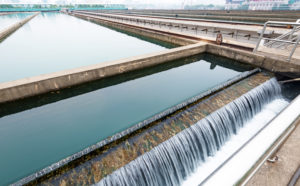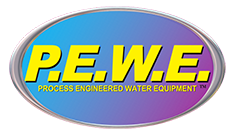
Modern urban wastewater treatment plant
Many people are unaware of how their water is treated to remove contaminants. But when we consider how important clean water is to our health and well-being — and to the condition of the planet — we may want to learn more about the processes of wastewater treatment. The following discusses several types of standalone wastewater treatment systems.
Wastewater Treatment: Dissolved Air Flotation
Since 2000, dissolved air flotation (DAF) has been utilized by over 50 treatment plants for drinking water in North America, with volumes between 0.5 million gallons per day (MGD) and 290 MGD. It is a type of standalone wastewater treatment system. The DAF wastewater treatment process takes out solid matter from water as air is dissolved by applying pressure. The air then enters a flotation tank. Bubbles form in the water and solid matter clings to the bubbles. The matter is then skimmed and removed from the water.
Wastewater Treatment: Oil and Water Separator Systems
These are older water treatment systems. An oil and water separator must be able to store a high volume of sludge and oils that result from the process of separation. It needs a maximum rate of flow so that the system will produce the most separation possible. The oil and water separators must work in tandem so that one’s settings are not higher than the other’s.
Emulsifiers, including soaps and detergents, can interfere with the operation of the separator and make it less effective. Some solvents improve the oil and grime’s ability to dissolve. Having the right solvents help ensure that the oil and water dissolve promptly.
Oil and water separator systems need regular maintenance, as all water treatment systems do. Passing water and oil through the system eventually makes the separator stop functioning. When repair and maintenance costs run high, it may be time to replace the system.
Wastewater Treatment: The Lamella Clarifier
Another type of standalone wastewater treatment system is the lamella clarifier, also called a plate settler. A series of plates offers surfaces for small particles to adhere to. Over time, the particles gather in the hoppers, found in the bottom of the clarifier. The sludge and the clean water are then removed.
If wastewater contains a large amount of solid contaminates, clarifiers are the right system for the job. They let gravity draw the bigger particles to the plates, as the just-cleaned water heads out. Adding a polyelectrolyte, which is a substance with a high molecular weight, and a coagulant, which helps to form masses, can help with the settling process. The polyelectrolyte brings particles together, making chains with enough weight to fall readily onto the plates.
While the average layperson may take fresh and clean water for granted, this information can shine a light on the fact that our access to safe water relies on complicated processes. Now that you know a bit more about the types of water treatment systems that are still in use today, you can feel a bit more informed as both a consumer and as a citizen of the world.
Click here to learn more about wastewater solutions.


